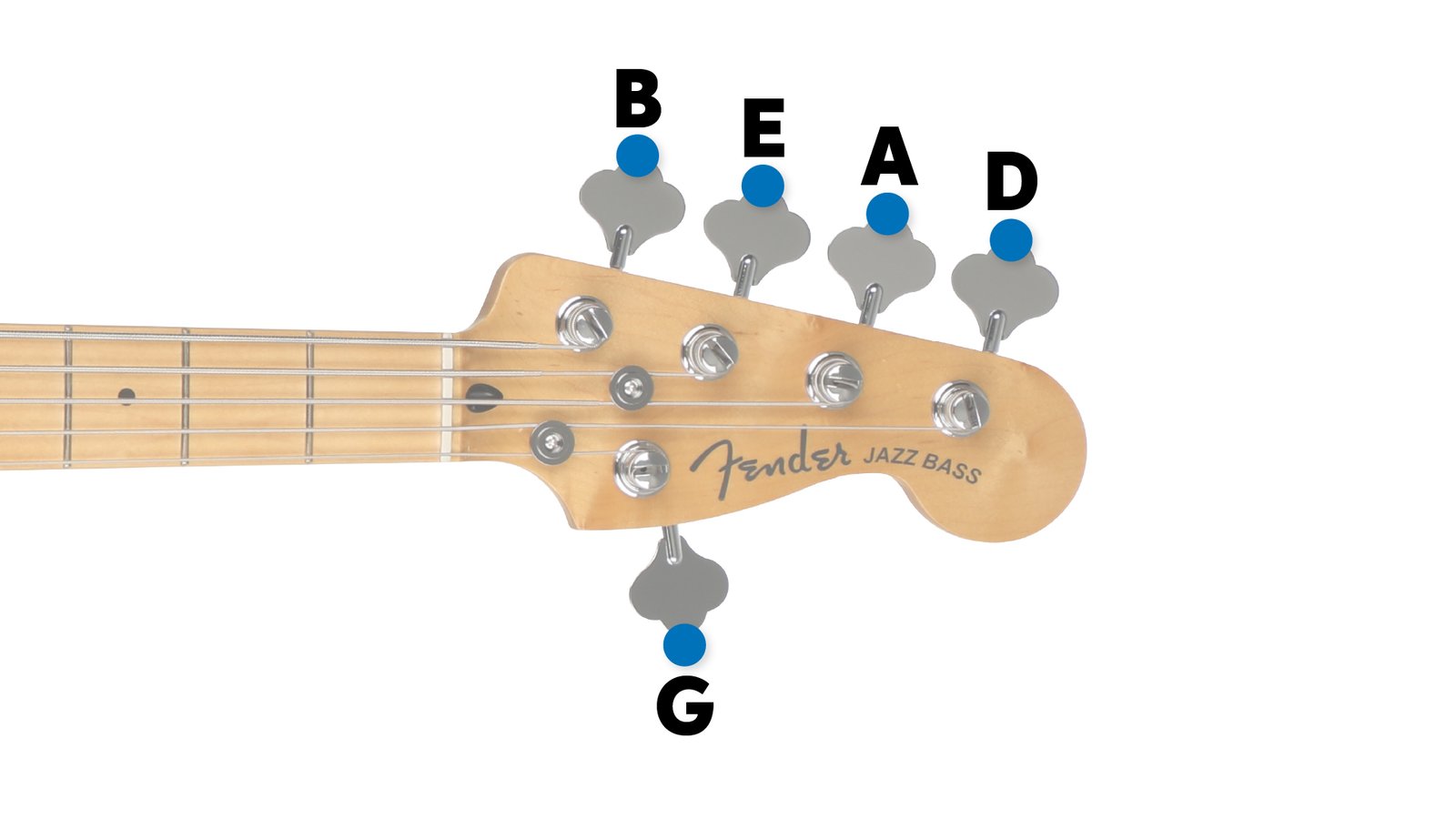Tuning your bass guitar is an essential skill for any bassist. A well-tuned bass ensures that your music sounds great and helps you play with other musicians effectively. In this article, we’ll give you different methods for tuning your bass guitar, helping you find the best way for your playing style.
Understanding Standard Tuning
The most common way of tuning your bass guitar is to use standard tuning. In standard tuning, the four strings of your bass are tuned to E1, A1, D2, and G2 from the lowest to the highest string. This tuning gives you a solid foundation for playing various styles of music. To check your tuning, you can use a tuner, an app, or pitch pipes to ensure each string is at the correct note.

Using an Electronic Tuner
One of the easiest and most accurate methods for tuning your bass guitar is by using an electronic tuner. These devices listen to the pitch of your strings and tell you whether they are sharp (too high) or flat (too low). To use an electronic tuner, simply clip it onto your bass or place it near the instrument. Pluck each string, and the tuner will indicate how to adjust the pitch. This method is great for beginners because it requires minimal musical knowledge.
Tuning by Ear
Tuning your bass guitar by ear can be a rewarding skill to develop. To start, you can use a reference pitch, such as a piano or another instrument that is in tune. Begin by tuning the lowest string (E1) to the reference note. Once the first string is tuned, you can use that string to tune the others. For example, the fifth fret on the E string is the note A, which is the pitch you need for your second string. Follow this method for the remaining strings, tuning D and G using the appropriate frets on the A and D strings. Tuning by ear helps you develop your musical ear, which is crucial for playing with other musicians.
Using Harmonics
Another effective way of tuning your bass guitar is by using harmonics. Harmonics are produced by lightly touching the string at specific frets while plucking it. For standard tuning, you can use the 5th fret of the lowest string (E) and the 7th fret of the next string (A) to create harmonics that match. To tune the A string, lightly touch the string at the 5th fret and pluck it. Then, compare it to the harmonic on the 7th fret of the A string. Adjust the A string until the two notes match in pitch. Repeat this process for the D and G strings. Tuning with harmonics can improve your ear training and provide a more nuanced tuning experience.
Using a Tuning App
With technology, tuning your bass guitar has never been easier. Many smartphone apps are designed to help musicians tune their instruments accurately. These apps use your phone’s microphone to detect the pitch of your strings. Similar to an electronic tuner, you simply pluck each string, and the app will guide you on how to adjust the pitch. Using a tuning app is convenient and provides visual feedback, making it easy for anyone to tune their bass.
Setting Up a Reference Pitch
If you frequently play with other musicians, it’s essential to establish a reference pitch. This is particularly important in live settings where multiple instruments need to be in sync. You can choose a specific tuning pitch, such as A440, where the A string is tuned to 440 Hz. Ensure that everyone is on the same page by agreeing on the reference pitch before rehearsals or performances. Consistency in tuning helps maintain a cohesive sound when playing with a band.
Fine-Tuning Your Bass
Once you’ve tuned your bass guitar using any of the methods above, it’s crucial to double-check your work. Sometimes, the strings can slip out of tune after playing for a while. Pluck each string again to ensure they remain in tune. If you find that a string has gone slightly out of tune, make small adjustments using the tuning pegs. This step will help ensure that you stay in tune during your practice or performance.
Understanding Intonation
While tuning your bass guitar is essential, intonation is another critical aspect to consider. Intonation refers to the accuracy of the pitch as you play different frets. To check your intonation, play the 12th fret harmonic and compare it to the 12th fret note. If the note is sharp, you need to adjust the saddle back; if it’s flat, move it forward. Proper intonation helps your bass sound in tune across the entire fretboard.
Regular Maintenance
Keeping your bass guitar in good condition is vital for maintaining accurate tuning. Ensure that your strings are fresh and free from dirt and grime. Regularly clean your bass and check the tuning pegs for any wear or looseness. If your bass has been neglected for a while, consider taking it to a professional for a setup. This step will help your bass stay in tune more easily.
Conclusion
Tuning your bass guitar is a fundamental skill every bassist should master. By using various methods like electronic tuners, tuning by ear, or apps, you can easily keep your bass sounding great. Understanding techniques like harmonics and maintaining your instrument also contribute to better tuning. Practice these methods regularly, and you’ll develop your tuning skills and enhance your overall playing experience.







